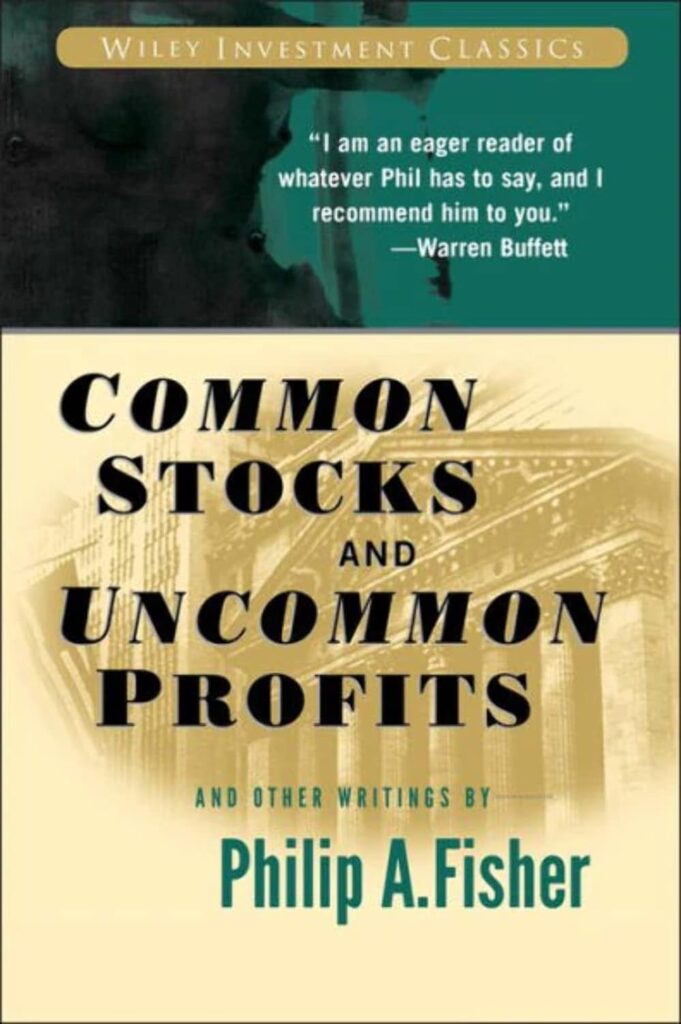What stocks to buy: 15 points to look for
“What are the matters about which the investor should learn if he is to obtain the type of investment which in a few years might show a gain of several hundred per cent, or over a longer period of time might show a correspondingly greater increase?
” In other words, what attributes should a company have to give it the greatest likelihood of attaining this kind of results for its shareholders?”
Common Sense And Uncommon Profits by Philip A. Fisher, in answering these questions, gives the fifteen points to look for in a common stock:
1. Does the company have products or services with sufficient market potential to make possible a sizable increase in sales for at least several years?
Companies which decade by decade have consistently shown spectacular growth might be divided into two groups: “fortunate and able” and “fortunate because they are able”. A high order of management ability is a must for both groups as no company grows for a long period of years just because it is lucky.
An example of the “fortunate and able” group is The Aluminium Company of America, says Philip Fisher. The founders of this company were men with great vision. They correctly foresaw important commercial uses for their new product. However, neither they nor anyone else at that time could foresee anything like the future size of the market for aluminium products that was to develop over the next seventy years.
Du Pont is an example of the other group of growth stocks – the “fortunate because they are able” group – says Philip Fisher.
This company was not originally in the business of making nylon, cellophane, Lucite, neoprene, orlon, milar or any of the many other glamorous products with which it is frequently associated in the public mind and which have proven so spectacularly profitable to the investor.
“Applying the skills and knowledge learned in its original powder business, the company has successfully launched product after product to make one of the great success stories of American stories,” says Common Stocks And Uncommon Profits.
2. Does the management have a determination to continue to develop products or processes that will still further increase total sales potentials when the growth potentials of currently attractive product lines have largely been exploited?
The investor usually obtains the best results in companies whose engineering or research is to a considerable extent devoted to products having some business relationship to those already within the scope of company activities, says Philip Fisher. “This does not mean that a desirable company may not have a number of divisions, some of which have product lines quite different from others.”
3. How effective are the company’s research and development (R&D) efforts in relation to its size?
4. Does the company have an above-average sales organization?
5. Does the company have a worthwhile profit margin?
6. What is the company doing to maintain or improve profit margins?
7. Does the company have outstanding labor and personnel relations?
8. Does the company have outstanding executive relations?
9. Does the company have depth to its management?
10. How good are the company’s cost analysis and accounting controls? .
11. Are there other aspects of the business, somewhat peculiar to the industry involved, which will give the investor important clues as to how outstanding the company may be in relation to its competition?
12. Does the company have a short-range or long-range outlook in regard to profits?
13. In the foreseeable future will the growth of the company require sufficient equity financing so that the larger number of shares then outstanding will largely cancel the existing stockholders’ benefit from this anticipated growth?
14. Does management talk freely to investors about its affairs when things are going well but “clam up” when troubles and disappointments occur?
15. Does the company have a management of unquestionable integrity?
